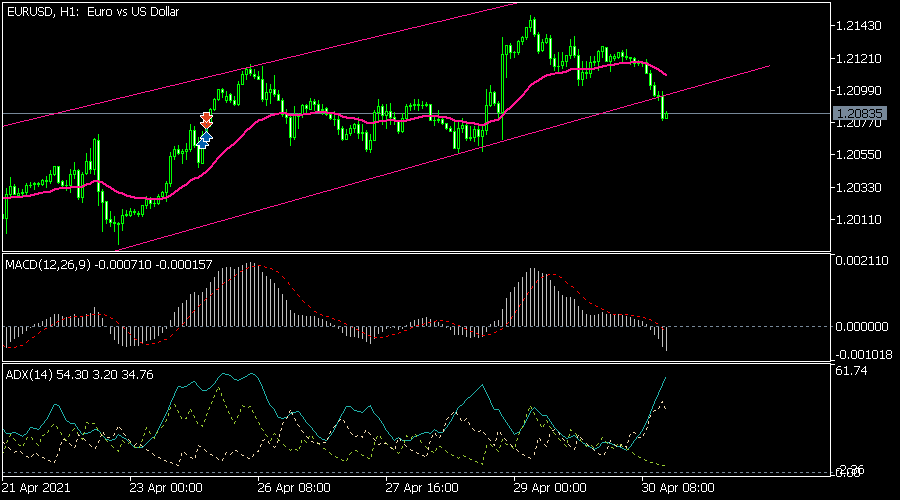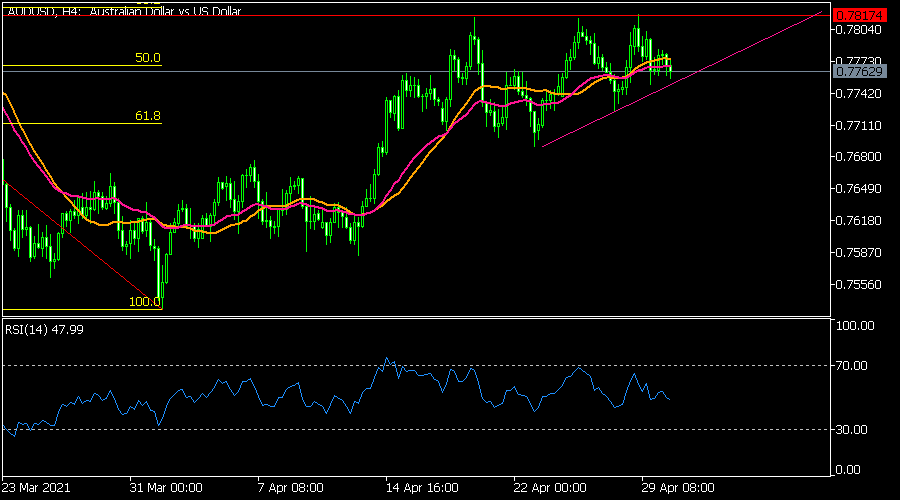The euro declined below a key support level after data revealed that the Eurozone economy contracted in the first quarter. Data by Eurostat showed that the economy contracted by 0.8% from the fourth quarter of 2020. This led to a year-on-year contraction of 1.8%, which was slightly better than the expected decline of 2.0%. In Germany, the biggest economy in the bloc, declined by 1.7% and 3.3% on a QoQ and YoY, respectively. Further data revealed that the bloc’s consumer price index (CPI) rose by 1.6% year-on-year while the unemployment rate improved by 8.1%. These numbers show that the bloc’s economy is lagging behind that of other places like the United States.
The Japanese yen was relatively unchanged as the market reacted to the latest inflation and manufacturing data from the country. According to Markit, the manufacturing PMI increased from 52.7 in March to 53.6 in April. This is important because it is the fourth consecutive month in which manufacturing activity is increasing. Also, the sector employs millions of people in Japan. Further data showed that industrial production increased by 2.2% in March while the unemployment rate declined from 2.9% to 2.6%. The jobs to applications ratio increased to 1.10, signaling that there are more vacancies than workers.
US futures and European indices declined even after some of the biggest companies in the world released strong earnings. In the United States, futures tied to the Dow Jones and S&P 500 declined by more than 0.50% while in Europe, the FTSE 100 and CAC 40 indices declined by more than 0.20%. This week, some of the biggest American and European companies like Chevron, Amazon, Microsoft, and Google released strong earnings. This decline is partly because of fresh worries about the global recovery. It is also likely due to profit-taking.
EUR/USD
The EUR/USD is on track to have its first monthly gain this year. Still, on the hourly chart, the pair managed to move below the lower side of the ascending channel. It also managed to move below the 25-day exponential moving average while the histogram and signal line of the MACD have moved below the neutral line. The Average Directional Index (ADX) has risen to 54. Therefore, the pair may keep falling as bears target the next key support level at 1.2050.
USD/JPY
The USD/JPY is little changed as the market reflects on the mixed data from Japan. It is trading at 108.82, where it has been in the past few days. On the hourly chart, the pair is stuck at the 25-day and 15-day exponential moving averages while the Average True Range (ATR), which is an important measure of volatility, has declined. The MACD is also moving below the neutral line. The pair may break out higher in the coming days.
AUD/USD
The AUD/USD pair declined after the relatively mixed Chinese manufacturing data. It is trading at 0.7763, which is slightly below the important resistance at 0.7814. The pair is slightly below the important 25-day and 15-day moving average and the 50% Fibonacci retracement level. It is also forming an ascending triangle pattern, meaning that it will likely have a bullish breakout in the near term.
General Risk Warning for FX & CFD Trading. FX & CFDs are leveraged products. Trading in FX & CFDs related to foreign exchange, commodities, financial indices and other underlying variables, carry a high level of risk and can result in the loss of all of your investment. As such, FX & CFDs may not be appropriate for all investors. You should not invest money that you cannot afford to lose. Before deciding to trade, you should become aware of all the risks associated with FX & CFD trading, and seek advice from an independent and suitably licensed financial advisor. Under no circumstances shall we have any liability to any person or entity for (a) any loss or damage in whole or part caused by, resulting from, or relating to any transactions related to FX or CFDs or (b) any direct, indirect, special, consequential or incidental damages whatsoever.
Recommended Content
Editors’ Picks
EUR/USD retreats below 1.0700 after US GDP data

EUR/USD came under modest bearish pressure and retreated below 1.0700. Although the US data showed that the economy grew at a softer pace than expected in Q1, strong inflation-related details provided a boost to the USD.
GBP/USD declines below 1.2500 as USD rebounds

GBP/USD declined below 1.2500 and erased the majority of its daily gains with the immediate reaction to the US GDP report. The US economy expanded at a softer pace than expected in Q1 but the price deflator jumped to 3.4% from 1.8%.
Gold drops below $2,320 as US yields shoot higher

Gold lost its traction and turned negative on the day below $2,320 in the American session on Thursday. The benchmark 10-year US Treasury bond yield is up more than 1% on the day above 4.7% after US GDP report, weighing on XAU/USD.
XRP extends its decline, crypto experts comment on Ripple stablecoin and benefits for XRP Ledger

Ripple extends decline to $0.52 on Thursday, wipes out weekly gains. Crypto expert asks Ripple CTO how the stablecoin will benefit the XRP Ledger and native token XRP.
After the US close, it’s the Tokyo CPI

After the US close, it’s the Tokyo CPI, a reliable indicator of the national number and then the BoJ policy announcement. Tokyo CPI ex food and energy in Japan was a rise to 2.90% in March from 2.50%.


